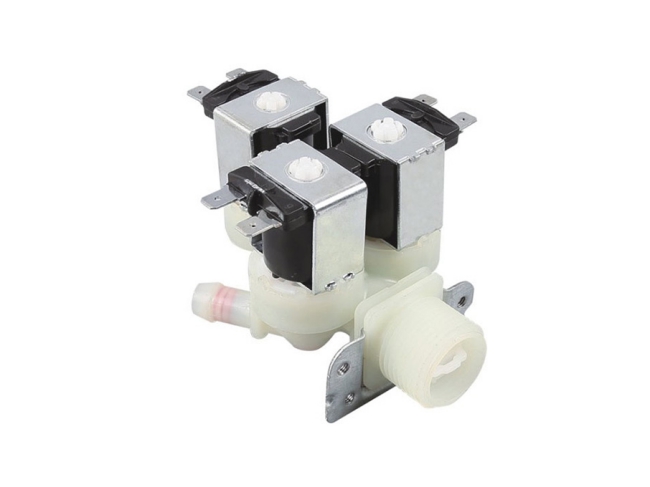Two conditions must be met for reverse osmosis operation:
First, there must be a semi-permeable membrane with high selectivity and high water permeability;
Another condition is that the operating pressure must be higher than the osmotic pressure of the solution, that is, an appropriate high-pressure pump is selected.
Analysis of the Effect of Waste Water Flush Valve in Water Purifier
There are generally two types of wastewater flush valves:
One is to replace the wastewater ratio, and the other is a solenoid valve with a self-flushing delay of 18 seconds with a wastewater ratio (or a non-self-flushing solenoid valve with wastewater ratio-only for pure water machines with a computer version). The function is to adjust the inlet pressure of the reverse osmosis membrane to achieve the purpose of water production.
However, neither the wastewater ratio nor the self-flushing solenoid valve can generally adjust the pressure of the inlet water, but the value is set by experience. In most cases, water production requirements can be met. But there are also certain drawbacks. For example, once I found that a pure water machine did not stop, and the water production was very small, almost none, and the high-voltage switch did not operate. The general handling of this situation may be to adjust the pressure value of the high-pressure switch to make it smaller to reach the value of its action. But this situation is different. If the amount of water produced is too small, it is not a matter of the high-voltage switch.

If the waste pipe is closed, the amount of water produced will increase. This means that the pressure adjustment value set by the wastewater flush valve is not all universal. Experience shows that the working pressure of the reverse osmosis membrane is generally set to about 5 kg, too small to produce less water and more wastewater; too large to have less wastewater and the life of the reverse osmosis membrane is reduced.
RO reverse osmosis equipment uses the reverse osmosis principle of RO membrane elements to prepare pure water. While preparing pure water, a certain proportion of wastewater will be discharged.
The ratio of pure water and wastewater discharge from RO reverse osmosis equipment is as follows:
RO reverse osmosis equipment with a 4-inch membrane, the discharge ratio of pure water and wastewater is 1:2;
RO reverse osmosis equipment with the 8-inch membrane, the discharge ratio of pure water and wastewater is 1:1;
RO reverse osmosis equipment is bound to discharge wastewater, but the production and discharge ratio of pure water and wastewater can be adjusted. The component that realizes this adjustment function is the wastewater regulating valve of RO reverse osmosis equipment.
The most intuitive manifestation of the application of the wastewater control valve in RO reverse osmosis equipment is the level change of wastewater flowmeter and pure water flowmeter.
When the flow of wastewater increases, the flow of pure water decreases, and the quality of pure water effluent becomes better.
When the flow of wastewater decreases, the flow of pure water increases, and the quality of pure water effluent becomes worse.
The above information is provided by the water inlet solenoid valve factory.
Copyright:@2020-2021
Comments Please sign in or sign up to post.
0
0 of 500 characters used